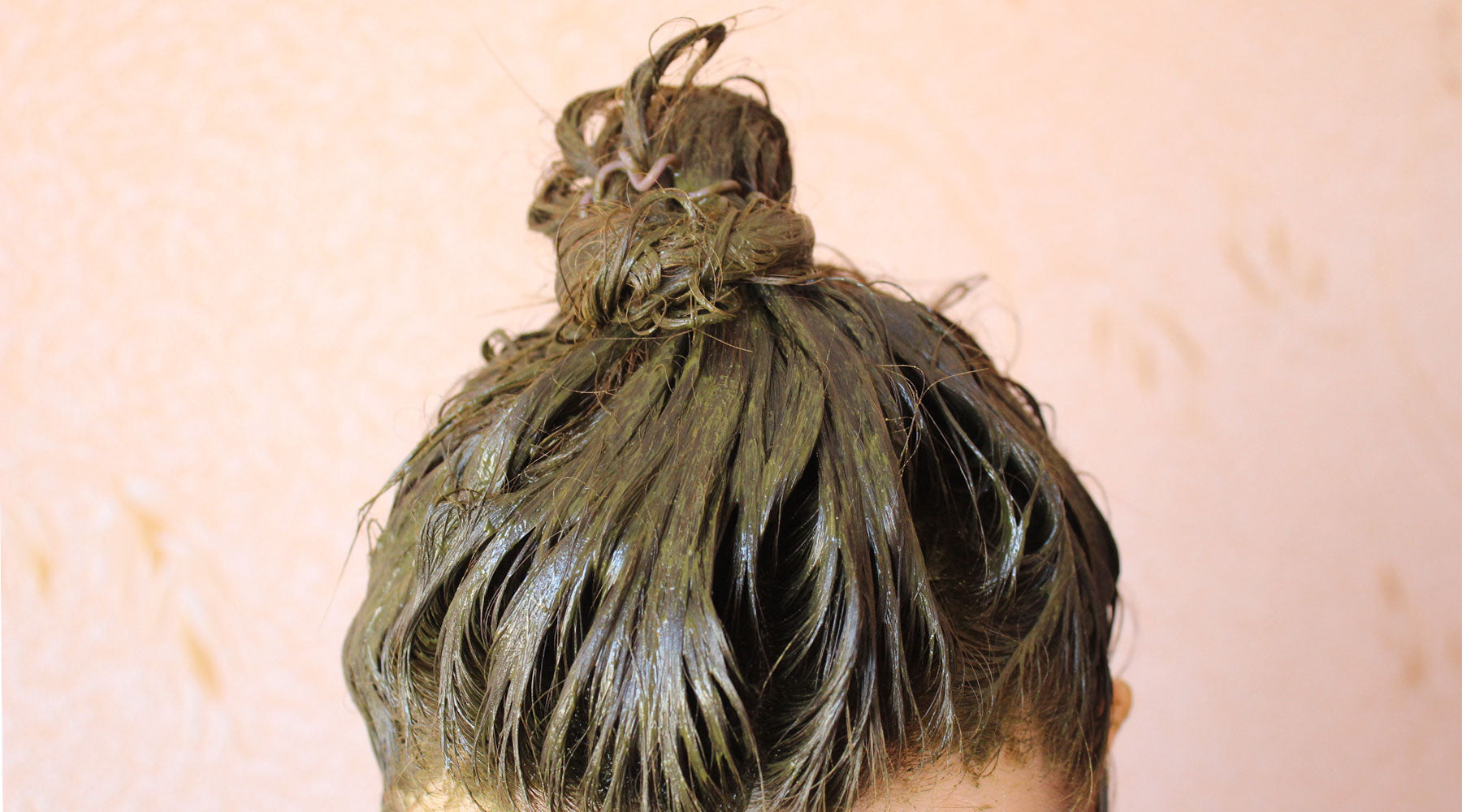
You may have seen it on holiday, at multicultural ceremonies or even gracing the hands of the royal duchesses. It’s henna, and it’s the ultimate safe way to dye hair and skin. While ubiquitous to so many celebrations and cultures, how many can say they actually know what it is? Now, what is henna and what makes it so special?
What is henna made of?
Derived from the mignonette tree or shrub, henna is a totally natural, vegan dye that can be used on our hair, bodies and clothes. Henna as we know it, is extracted from the plant’s leaves and ground into a fine powder. The powder is then mixed with various liquid ingredients to achieve a paste-like consistency and the desired colour.
How does henna work?
Now we know what henna is, how does it work? Henna achieves the ability to dye hair and skin via its production method.
Crushing sun-dried henna leaves releases a substance called Lawsone, named after the Latin name for the henna plant, lawsonia inermis. This substance gives henna its dying properties, achieving red-brown stains in its rawest form.
Variations of henna
Unbeknownst to many, henna comes in a few varieties, which are used for different purposes. You’ll also hear different terminology such as mehndi which is used predominantly by Muslim communities in relation to mehndi weddings.
Natural henna
Natural henna comes in two forms. It can be a natural hair dye in powder or cream, or even just a conditioner or shampoo. It is also found in the form of body art as the dye binds to the surface of the skin very easily. Natural henna is sourced from the mignonette tree and provides reddish brown tones.
Neutral henna
For body art, you may come across the term neutral henna – this actually derives from the cassia obovata leaf. The leaves contain a much lighter, yellow resin pigment as opposed to the redder henna leaves.
Black henna
Although black henna is associated with natural henna, in reality it is a very different thing. This is because black henna is derived from the indigo fera tinctoria leaf and contains PDD, a chemical known to cause painful allergic reactions. For this reason, we recommend use of the other types.

Using henna to dye hair
As a naturally vegan hair dye, henna has transcended its Indian origins and become popular in the West. Unlike cosmetic dyes, there are no harmful ingredients such as ammonia. The result varies depending on the hair’s original colour and the quality of the dye, but you can use henna for blonde hair as well as darker shades – and including beards. Henna is genderless and will achieve glowing results for both men and women’s hair.
What colours can I dye my hair with henna?
Natural red henna usually results in auburn shades or darker burgundy. For other colours, henna can be mixed with the abovementioned cassia obovata, producing red, black, indigo and even blond shades. You’ll find the cassia obovata plant marketed as neutral henna hair dye, though it’s not strictly true henna! Nevertheless, if you learn how to mix henna hair dye, you can achieve a whole range of colours.
Is henna good for hair?
Absolutely! It’s an organic deep conditioner that coats the hair shaft to seal in moisture and keep the cuticles tight, while enhancing body and shine. That’s why it’s so popular as a standalone shampoo and conditioner – there are no parabens, ammonia or genetically modified ingredients. What’s more, it actually encourages growth or regrowth of both head and facial hair. So a brilliant option for those experiencing hair loss.
Can I use henna for a sensitive scalp or skin?
Not only can you use henna for a sensitive scalp, but it is recommended. Leaning on the power of natural, plant-based components, henna doesn’t contain the harsh additives associated with traditional box dyes. This is excellent news if you are allergic to hair dye or are looking for an alternative kinder to your body and the planet.

What else can henna be used for?
Beyond its use as an organic hair dye, henna can also be used for dying fabrics, skin art and even in makeup products.
Henna ‘tattoo’
You may have heard the term ‘henna tattoo’. This is a marketing term as it does not permanently dye the skin, gradually fading over time with exfoliation as the bond between dye and skin breaks down.
Henna tattoos go back centuries to the Bronze Age, and have been linked to various cultures including the Jewish, Muslim, Hindu and Sikh faiths. This practice of henna body art is called ‘mehndi’ in India and the subcontinent and is a staple of the Hindu faith.
Henna makeup products
You can also find henna in natural beauty products like henna hair mascara, which adds a highlight effect for copper and brown shades. It can be used for eye and lip liner, which is brilliant news for animal lovers as henna is completely vegan, and more often than not, cruelty free. It’s also becoming a popular choice for eyebrow dyes, lasting around four weeks.
Where to buy henna
You can find 15 different colours of henna from two main brands right here at itselixir. Choose from nourishing conditioning masks, powders and shampoos to give your hair the lease of life it deserves. Nothing says organic and cruelty-free like henna.
